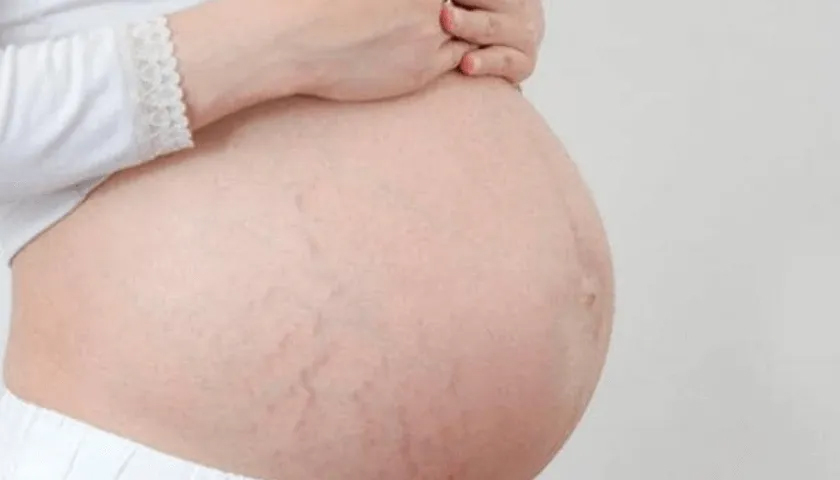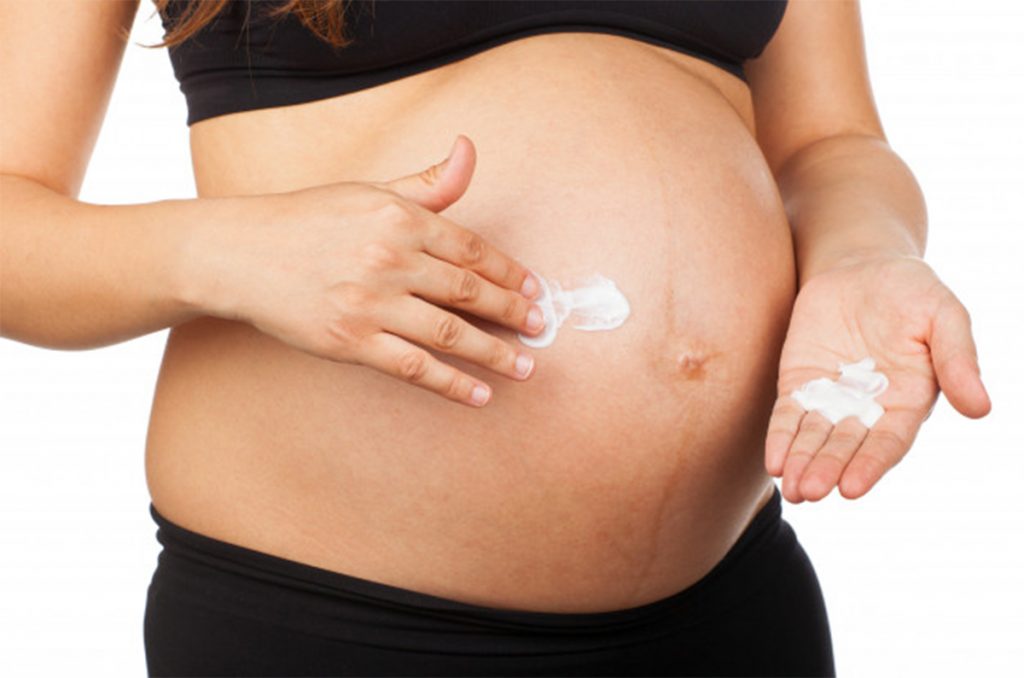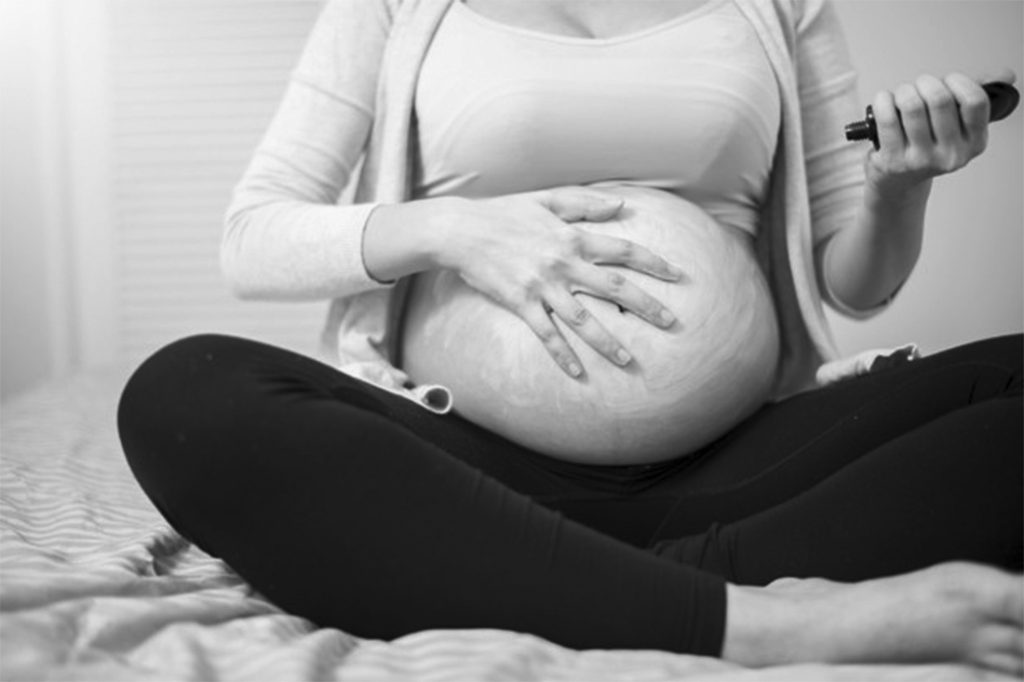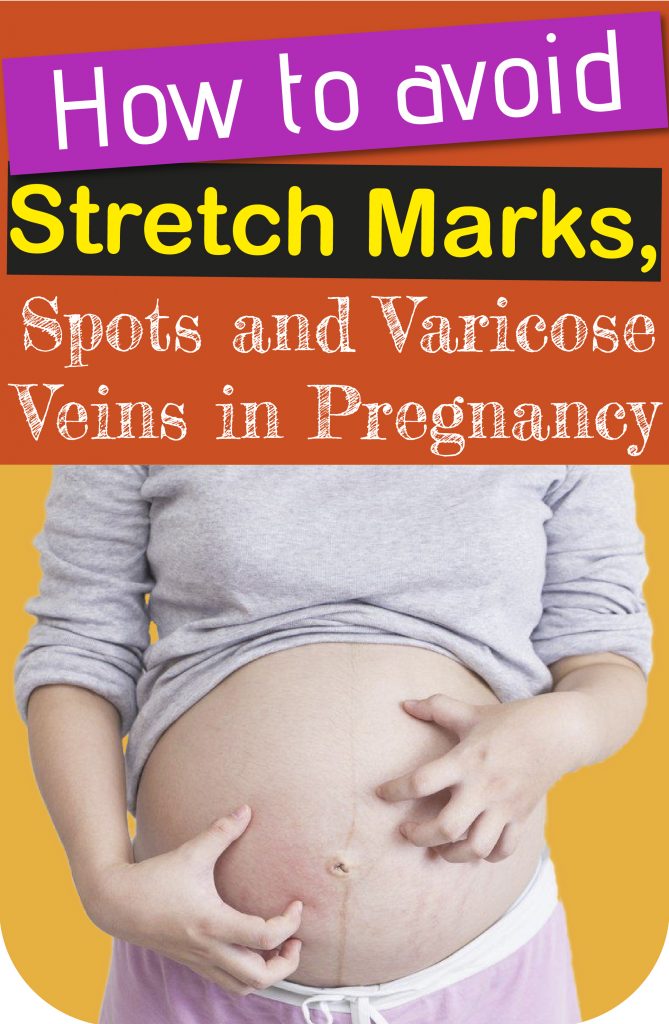
What are stretch marks and why do they appear in pregnancy?
The appearance of stretch marks is one of the most common problems in pregnancy related to the skin. Pregnancy-related streaks are known in the medical world as ‘gravidarum striae’, and usually begin to appear through the second trimester of pregnancy, occurring mainly in the navel zone and spreading through the belly. It can also appear in the belly, thighs, upper arms and buttocks of pregnant women.
When pregnancy is multiple, that is, when the woman expects more than one baby, the probability of presenting stretch marks is even higher, since the skin tends to stretch much more. Stretch marks are essentially a ‘tear’ of the skin, resulting from collagen defragmentation and elastic layers of the skin. Stretch marks may appear in the body of some pregnant women for various reasons and causes. One of the causes of this nuisance is increased body weight.
Gaining weight in pregnancy is normal, even if it is the weight of the baby, but with that weight sometimes come stretch marks. Hormonal changes are also important factors, but experts say the main factor for the development of stretch marks is genetic. Prolonged use of high doses of corticosteroids is also cited.
It is important to emphasize that this does not occur in all pregnant women, and although it is not possible to erase the marks of pregnancy, they can be mitigated. With increased body weight, the fibers of elastin and collagen (responsible for firmness) that are in the dermis, when they do not follow the increase in body volume, they rupture and this is reflected in the skin.
How to treat stretch marks in pregnancy
Treatment aims to improve appearance and aesthetic appearance. The various techniques of treatment of stretch marks, such as dermabrasion, intradermotherapy, peeling, subcision, continuous use of some types of acids, aim to stimulate the formation of collagen tissue in lesions.
Such treatments are medical procedures and therefore should only be performed under the guidance of a qualified professional, and most of them can only be performed after the breastfeeding period.
Woman’s skin during pregnancy
The woman’s skin during pregnancy is more sensitive and susceptible to some changes
The hormonal, vascular and immunological changes that arise in women during pregnancy end up causing some very noticeable changes in her skin. It is not all women who have skin changes, but most at any given time may present irritation, eczema, allergies, dry skin and spots in some part of the body.
What can alter the woman’s skin during pregnancy
During pregnancy, women’s skin is more susceptible to irritations by the use of products such as cosmetics, deodorant and perfumes. For this reason, it is recommended to use neutral soaps or cleansing emulsions, as well as to avoid the use of moisturizers containing perfumes or antiseptics that may irritate the skin.
On the other hand, there is a greater predisposition of pregnant women who develop some allergy to jewelry, or some food. In this case, it is necessary to observe what types of food or object are causing irritations in your skin.
During pregnancy, there are women who have both very dry skin and very oily skin. In these cases, it is best to avoid time-consuming baths with very hot water. It is advisable to moisturize the skin well after bathing, with creams containing vitamins A and D, so that they correct the texture of the skin and to gain extra elasticity to support stretch during pregnancy. In this case, it is convenient to use creams to improve dry skin.
The spots on the pregnant woman’s skin
Spots are other nuisances that concern many pregnant women. According to statistics, about 70% of pregnant women may have dark brown spots on the face, cheeks, nose and sour. The spots are called Melasma, and may appear during the first trimester of pregnancy, accentuating in recent months when hormone levels are higher.
Exposure to the sun can make the problem worse. To prevent this, ultraviolet radiation should be avoided by using more efficient sunscreens. Once the period of breastfeeding is over, the dermatologist may indicate creams to lighten the skin. If melasma is not deep, in 18 months the spots may disappear. Otherwise, you can reduce them.

Stretch marks and cellulite in pregnant women
About 90% of pregnant women have stretch marks that may appear in the abdomen, thigh and breasts, between the sixth and seventh month of gestation. They arise due to rapid increased tension and stretching of skin tissue, with the rupture of collagen fibers. Genetic predisposition to have high-weight babies and increased adrenal gland activity are the factors that lead the woman to present stretch marks.
To prevent the appearance of stretch marks, it is best to maintain an appropriate weight during pregnancy, use moisturizing creams with vitamins A and D. There are treatments that at the end of lactation can be very effective against stretch marks. Your doctor should be consulted.
As for cellulite, it is recommended to perform walks, healthy diet and take water in abundance. If the doctor authorizes it, lymphatic drainage sessions may be indicated to improve the masdemas, and once breastfeeding is finished, he may perform massotherapy sessions to improve circulation.
Pregnant woman’s skin care
It is appropriate to consider some care that should be taken with the skin during pregnancy:
- Any product that is used on the skin must be authorized by the doctor, as it can be absorbed by the blood and pass on to the baby.
- Do not expose yourself to the sun, and use 50 UVA and UVB sunscreen to prevent spots.
- Seek to maintain adequate body weight during pregnancy.
- Moisturize the skin with creams with vitamins A and D.
- Avoid the use of anti-wrinkle or antiacne creams containing retinoids, as well as anticellulite cream, dermoclareator, or treatment of mesotherapy. Consult a dermatologist for more information.
- Do not resort to laser treatment or peeling.
- Drink plenty of water.
Skin care during pregnancy
How to prevent spots and stretch marks in pregnancy
Stretch marks and spots are some more visible changes that can leave marks on the pregnant woman’s skin. Can we do something to prevent them? Is it possible to use hair lotures, dyes, deodorant and colonies safely? What precautions should pregnant women have with cosmetics during pregnancy?
Read more : Postpartum Saggy Belly – How to Tighten Loose Skin After Pregnancy
Also: Best exercises to practice in pregnancy | Safe Pregnancy Workouts
The delicate skin of the pregnant woman
The pregnant woman will undergo a number of very important hormonal and vascular changes throughout pregnancy. First, it is important that you maintain proper hygiene. With respect to cosmetic products that are applied to the skin, the pregnant woman should be sure that they are not products that can be absorbed by her skin, because it can reach the fetus and produce problems. Most cosmetics have no problems, but it may be that some doctor prescribes some treatment, and should take into account that pregnancy can change the doctor’s prescription.
How to prevent stretch marks on the abdomen, glutes and legs?
Pregnant women will face the problem of distension of their abdomen, which, for physiological reasons, can cause, in some cases, to develop stretch marks more or less visible. To prevent stretch marks from appearing, products that nourish the skin and keep it elastic from the beginning of pregnancy can be used so that this distension is not so intense, and in some way can prevent stretch marks. However, the woman who is prone to having stretch marks will have them regardless of the cosmetic products she uses. However, moisturizing the abdominal area with specific anti-strias products can help them develop to a lesser extent and that the final cosmetic result is better, especially in the postpartum period.
How to avoid spots during pregnancy?
The hormonal changes of women favor with spots appearing on the skin and sun exposure makes it even easier to appear. For this reason, pregnant women should use a moisturizing cream with a high sunscreen daily to prevent this pigmentation appear on the skin. If after all, the spots appear, one should continue using the sunscreen factor to prevent pigmentation from becoming more extensive.
What precaution should be taken with cosmetics during pregnancy?
In pregnancy, only cosmetic products that are safe should be used, and these are those that have transcutaneous and percutaneous absorption of components to prevent them from reaching the fetus. At first, most cosmetic products offer no problems. On the other hand, more care should be taken with treatment products that should occasionally be prescribed especially for pregnant women. Before you start using them, the pregnant woman should notify the doctor that she is pregnant, so that they have absolute safety of the prescribed medications.

Beauty care before and after childbirth
Stretch marks, varicose veins and acne. How to take care of the body during pregnancy and after childbirth?
During pregnancy, hormonal changes and weight gain (and in some cases genetic predisposition) may cause different negative signs to manifest themselves in female aesthetics.
In general, this situation may reverse after childbirth if the pregnant woman takes some care so that these signs do not appear, or if they appear, leave no marks later.
How to take care of beauty before and after childbirth
It is normal that during pregnancy different spots may appear in different parts of the body. For example, many pregnant women have darker areas on their faces. To prevent these spots from darkening more, or even become permanent, the pregnant woman should avoid the sun at certain times and without adequate protection.
Hormonal changes have different effects on the skin and in some cases stimulate the sweat glands, producing excessive sweating and dehydration of the face. To avoid this problem, it is best that they use moisturizing creams. In general, facial massages with essential oils can help reduce swelling and redness.
Stretch marks in pregnancy
As a consequence of increased weight and volume, the tissues are rapidly burst, and even if the skin fibers are very elastic, it will reach the point where they may rupture. In these cases, it’s when stretch marks appear. Its appearance has to do with genetics, physical state and overweight of women.
To prevent stretch marks from appearing, it is best to keep the skin as hydrated as possible, and for this it is necessary a healthy and balanced diet, which nourishes the skin inside, while applying the specific moisturizing creams.
If the pregnant woman already has stretch marks, they can seek a suitable product that helps fight them and thus may have them under control. Once stretch marks become white, they can only be eliminated with treatments that remove or remove the damaged layer of the skin.
Acne in pregnancy
Acne is another very common problem during pregnancy and requires treatment so that it does not extend after childbirth. The pregnant woman may not use any product, since some products, such as those containing salicylic acid, benzoyl peroxide or any of the retinoids are toxic to the fetus.
It is important that you keep your face hydrated and clean, avoid makeup or greasy creams or oil. The skin should be able to breathe. In any case, if you already have an acne problem during pregnancy, it is very important that the pregnant woman visits a dermatologist and finds out about the care during pregnancy, since certain products can be very harmful to the fetus.
Varicose veins before and after childbirth
Another frequent problem during pregnancy are varicose veins or varicose veins. They are dilations of the walls of the veins and usually happen in the lower limbs due to blood circulation problems. Due to excess weight during pregnancy, the legs should make an extra effort that can trigger the appearance of varicose veins. To prevent them from appearing, you should maintain a good diet, avoid being standing or sitting in the same position, perform massages on the legs when they are sore or tired and exercise to stimulate circulation in the area.

Related: pregnancy stretch marks,preventing pregnancy stretch marks,stretch marks,stretch marks removal at home,fade stretch marks,remove stretch marks,get rid of stretch marks,get rid of stretch marks fast,how to get rid of stretch marks for teenagers,how to get rid of stretch marks naturally,getting rid of stretch marks,how to get rid of stretch marks fast, pregnancy acne,acne during pregnancy,how to clear pregnancy acne,how to treat acne during pregnancy,how to treat pregnancy acne,acne pregnancy,acne in pregnancy,acne treatment,acne treatment during pregnancy,pregnancy acne help,safe acne treatment during pregnancy,how to get rid of acne during pregnancy,pregnancy acne remedies,pregnancy acne solutions
Disclaimer: This post may have affiliate links.


